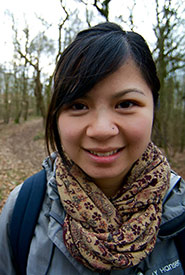Digging badgers: A close encounter
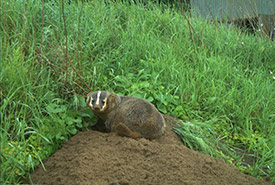
A badger at its burrow. (Photo by J. Sayers, Ontario Badger Project)
“A badger? On my property? There are no badgers here!” is often the response I got from landowners in southern Ontario during my short stint as a field technician for the Ontario Badger Project.
American badgers are difficult to spot; they’re elusive, solitary and mostly active from dusk to dawn. They are also very mobile, visiting another burrow every few days and travelling up to 14 kilometres in one night! They belong to the Mustelidae family, along with minks, otters and wolverines. In Canada, there are four subspecies of American badgers:
- Taxidea taxus jeffersonii
- Taxidea taxus taxus
- Taxidea taxus berlandieri
- Taxidea taxus jacksoni (the southern Ontario population)
It is estimated that there are fewer than 200 badgers of the southern Ontario subspecies, which is listed as endangered federally and provincially.
Related content
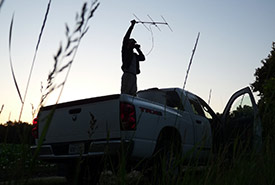
On the hunt for a signal from the radio transmitter. (Photo by D. Ethier, Ontario Badger Project)
During the season, I worked for the Ontario Badger Project. I helped radio track six different badgers to their burrows during the day and to humanely trap one badger to be fitted for a transmitter. As exciting as it may sound, most of our days consisted of driving around listening to white noise from the receiver. Eventually we would pick up a signal on the receiver, telling us one of the badgers with a transmitter was nearby. We would narrow down the signal to a property using an antenna and contact that property owner to gain their permission to access their land to locate the burrow.
There were many willing landowners in the area who let us onto their property so that we could learn more about badger ecology.
Some of these lands with burrows included Nature Conservancy of Canada (NCC) properties in the Southern Norfolk Sand Plain. NCC manages approximately 2,300 hectares (5,683 acres) for conservation in the Southern Norfolk Sand Plain for species at risk like the American badger. By restoring meadows, woodlands and wetlands, NCC has added 714 hectares (1,764 acres) to the potential badger habitat available on the landscape in this region. These restored sites provide opportunities for secretive badgers to forage and burrow in relative seclusion from human contact.
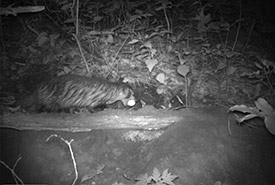
Badgers are carnivorous. This one is bringing back an egg. (Photo by J. Sayers, Ontario Badger Project)
Once we obtained permission to access a property, we would set up cameras with a motion sensor outside of the burrow to catch a glimpse of their lives. We would catch them leaving and coming back to their burrows, digging burrows or bringing different food items back. We would even observe playful behaviour among mama badgers and badger kits.
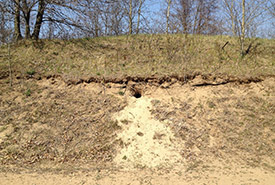
Freshly dug classic badger burrow. (Photo by J. Sayers, Ontario Badger Project)
After a while I started gaining a “badger sense.” I learned that there are burrows that look like a classic badger burrow, characterized by a large amount of freshly dug dirt and a horizontal oval-shaped entrance. Then there are other burrows that vary greatly in appearance and are seemingly used just as much.
We learned that burrows are often located along edges in the landscape, occasionally in the forest and rarely in the middle of a field. I also got to know each badger pretty well — what their territories are, which burrows they visit more regularly and who was likely to send me on a journey looking for them.
Through the work of the badger project, I also tracked which individuals had mated, who had given birth, and which individuals had died. All of this information is known because these individuals were followed daily and over multiple years, and it ultimately contributes to the ecological knowledge gaps of the American badger.
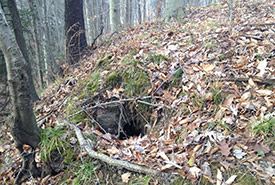
An older and more inconspicuous burrow with a badger in it. (Photo by D. Ethier, Ontario Badger Project)
Before this project, very little was known about this population of American badgers in the Southern Norfolk Sand Plain. Many people even thought there were no badgers left in this area (hence the disbelief of many landowners)! Through citizen science efforts, local residents called into the badger hotline to report possible badger burrows. By collecting hair samples at these burrows, it was confirmed that badgers are indeed still in southern Ontario, which led to trapping and radio tracking a total of 10 over five years and a great deal of valuable knowledge gained to help protect this species.
I’ve been lucky to have a close encounter with American badgers through working for the Ontario Badger Project. It’s unlikely that many others will have the opportunity for a close encounter. However, you can still learn about them through the work of the Ontario Badger Project to better appreciate these amazing animals.
For more information, visit ontariobadgers.org and report any sightings of badgers or burrows to the badger hotline 1-877-715-9299 or email: info@ontariobadgers.org.
The American badger is one of 19 species featured in NCC’s gift giving campaign: Gifts of Canadian Nature. To learn more and to give the gift of conservation, click here.

